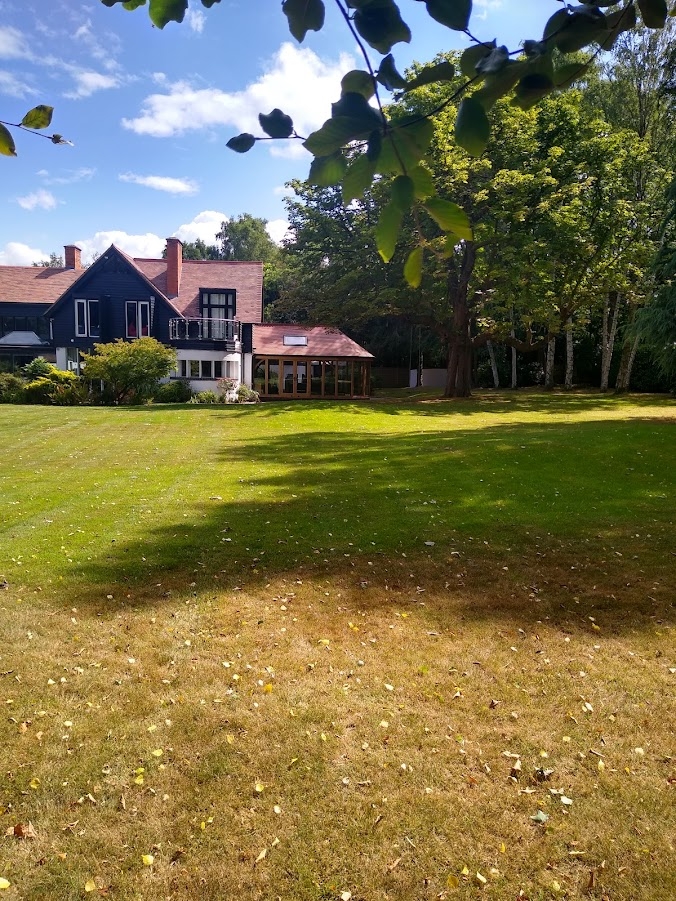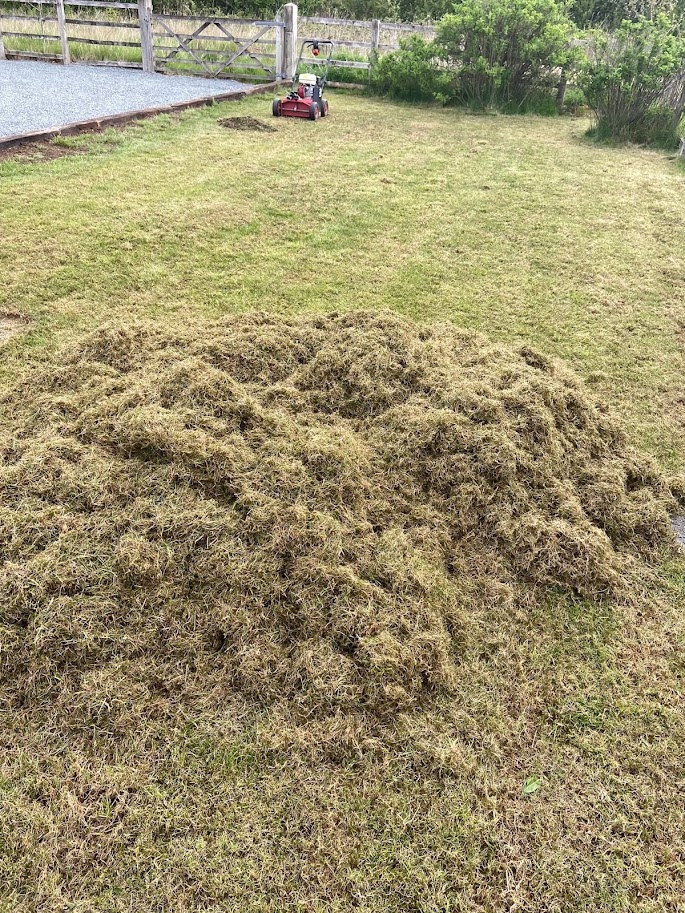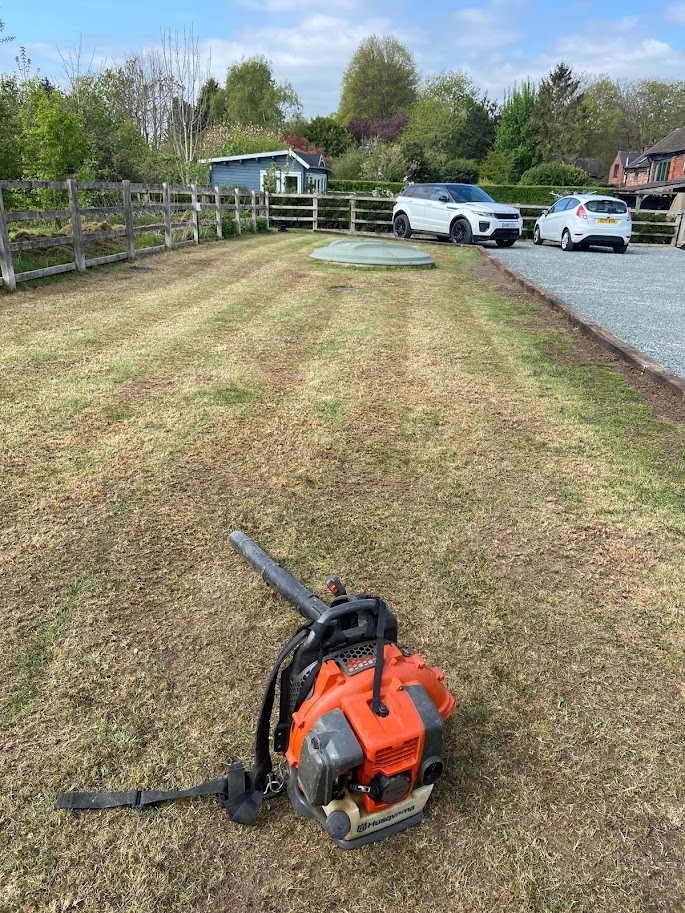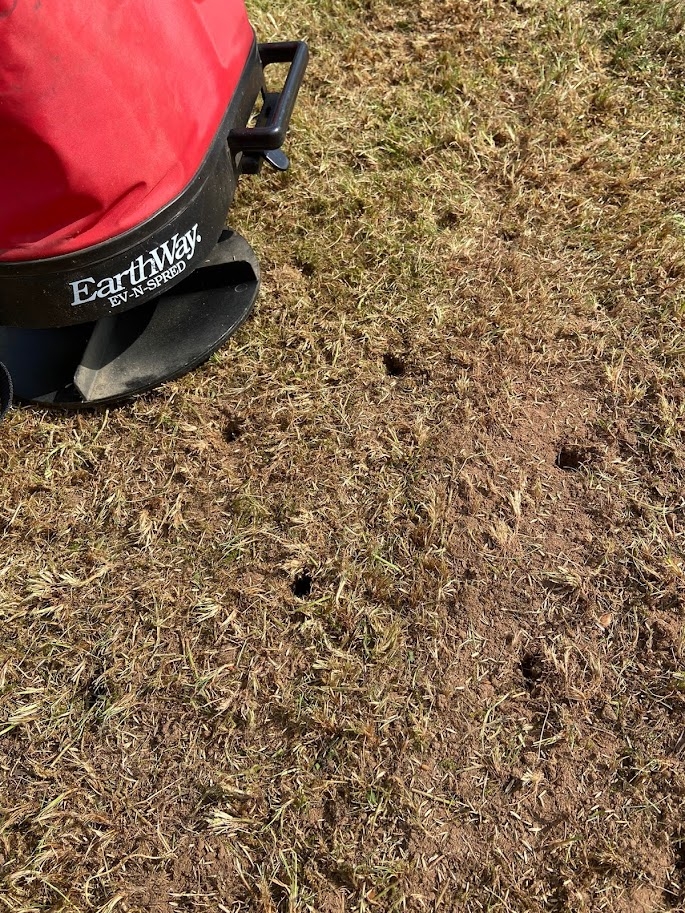Revive Your Lawn Like A Professional This Autumn (These Results Will Shock You!)
The dry weather across the whole of this year, combined with hot spells and record temperatures this summer have left some lawns in a poor condition and in need of additional autumn care. Read on for our tips which we guarantee will save you time, money and enhance results!
Will My Grass Recover This Autumn?
While we've been enjoying the balmy UK summer, our lawns have taken quite a battering this year. Naturally for us and keen lawn lovers, our attention turns to autumn feeds and to the lawn care that will be required to bring our lawns back to health before the onset of deeper autumn / winter conditions.
We have already covered drought conditions in a previous article this summer should you want to come back to this post in a moment but in terms of recovery likelihood, it is the lawns that are healthy when entering a drought which will recover fastest, and most effectively. This best lawn health to recover from drought conditions includes:
- Only a small thatch layer and good soil structure (ie, recent scarification and aeration
- A dense grass cover when entering the drought period
- A sensible height of cut before and during of no lower than 25-30mm, if not higher
- Occasional watering
Lawns which didn't enter the drought well (maybe the above lawn care practices were not employed well enough), or haven't been managed too smartly this summer could well be in a lot of pain right now, which may have brought you here! The good news is that we're here to help with our guidance for turning your lawn around this autumn.

Is My Lawn Dead Or Does It Just Need Some Autumn Care?
It’s highly unlikely that your grass is completely dead, but it may have lost a lot of leaf mass this year. If you choose not to act, winter rainfall will rehydrate the soil in time, but not before moss starts to take advantage of the thin grass coverage. Autumn is the perfect time to set things right with a warm soil temperature deep into the year, and predictable rainfall to work with.
Grass will come back in time. If a lawn entered this summer in a less than ideal condition however, then it is going to come out of the other side no better, and after a long wait.
If you delay until next spring, the soil will be cold and the weather likely dry again once more… and then you may be back around to having to water your lawn even more to get seed through or new turf to establish than the amount of water / effort that would have been needed to look after it this summer / autumn! We would advise you make the most of autumn conditions to get the best possible result now, rather than experience the typical slow start to spring. We can’t emphasise this point enough.
We do carry out spring overseeding ourselves but it is not with our Autumn Seeding Guarantee. The level of customer patience and participation in terms of watering is far higher during the spring.
If you were to read no further, this tip of acting this autumn rather than spring could save you a vast amount of time and expense alone, and greatly enhance the results you achieve!
Revive Your Lawn This Autumn - STEP BY STEP
Scarification
Scarification is the powered raking of a lawn. For your lawn to have really suffered over the summer, it is likely made up of a high level of thatch (dead grasses). This thatch warms up even more so than soil in a heatwave situation, so works to harm your grass even more so. It could well be that your lawn needs a good clear out and this is your golden opportunity!
It will depend on the level of thatch in your lawn how harsh you need to be with the scarifier this autumn. We would always advocate taking samples from the lawn to view a cross-section – view the soil that you are working with. Again, if unsure start to scarify on a higher setting – you can always be more aggressive later. Some lawns will require more scarification than others dependent on the existing moss and thatch.


Aeration

A Lawn mid lawn renovation near Hinckley. Aeration is a vital component of a restoration prior to overseeding
After cleaning up all that debris from your scarifying efforts, we move on to aerating the lawn. There are so many benefits to this – and so many different types of aeration that can be performed! Simply, aeration is going to relive compaction in the soil. It is going to inject some air and life into dry soils, allow much needed water and nutrients down deeper into the soil and in turn encourage the grass plants to thrive once again with a deeper, stronger root mass to follow. The soil structure must be improved for your lawn to cope well over the winter months and start next year in a much stronger place.
Some soils will be suffering from a turf condition known as ‘Dry Patch’ or ‘Localised Dry Patch’. This is a fungus which is forming a waxy coating on the soil surface, repelling water droplets. Without aeration, this moisture cannot rehydrate the soil effectively if due to Dry Patch, or if just an area of very compacted soil, or a higher spot of your lawn.
Wetting agents are used widely in sports turf to manage soil moisture. If soil moisture has been allowed to become almost non-existent in your lawn, then the use of the best possible liquid cocktail for your lawn is going to be vital to get down the aeration holes, and get some life back into your lawn.
Check out this short clip which shows one of our scarifiers and one of our aerators in action. We have differing machinery for all sized lawns and conditions. You can view more videos via our YouTube channel including one on Lawn Repair and Renovation.
What is the best Autumn Treatment for my Lawn?
A wetting agent could be right up there in the current situation. While you can get granular wetting agents, we like to use liquids due to being able to tank mix other beneficial nutrients at the same time to deliver a range of benefits. We call this liquid cocktail our ‘Stress Buster’ treatment which is made up of the most relevant type of wetting agent for the conditions presented to us, along with an organic feed, high in amino acids (plant sugars) for the best possible prevention and recovery from drought and lawn disease pressure.
We can mix other products within this treatment too – it’s quite fun and gains fantastic results! Having products which are compatible for tank mixing in this autumn drought recovery phase will deliver much more to the grass and faster than what a granular product could. In our lawns we have a level of nitrogen and key nutrients already in the soil from our summer treatments.
Overseeding
Much will depend on the condition of your lawn as to if overseeding is required also. It could be that the whole lawn will benefit from seeding following aggressive mechanical work, or it could just be in selective areas that will benefit from a little seed.
Above all else, it is vital that there is good seed to soil contact. That means, seed, planted into the ground! It may sound crazy, but so much seed is wasted chucked onto the surface of lawns left to dry out and provide bird feed.
Top Seeding Tips:
- Prepare the area. Lightly rake and make plenty of small holes so the seed and grass roots can access the soil
- Overseed at a 25-50g m/2 rate, dependent on the grass types and lawn condition
- Lightly brush seed into the soil
- Lightly cover the seeded area with a fine soil, so it has complete soil contact – surrounded on all sides!
The best overseeding jobs are where you can see less than 10% of the seed when finished. From here it is a case of watering well. Water little and often, a daily drink as you would a new house plant. On the days we see autumn rain then you can take the day off, maybe even two. You can read more tips on overseeding your lawn within another article which we gained great feedback this summer:

Autumn For Lawn Overseeding?
We would recommend carrying out this job from mid-August, and completed no later than October – ideally the start of October if there is a lot of seeding to be done. The mild and damp autumn conditions of October and November will help to revive your lawn. November also provides the opportunity to address any areas which may have struggled. Again, in the context of spring work heading into summer this can be an uphill battle without extensive watering of your lawn - so act now!
We will be impressing customers at the scale of the turnaround we can provide between now and the end of the year, with record bookings already! If we are able to help with your lawn you are more than welcome to head to our Contact Us page if you would like to schedule a chat.
